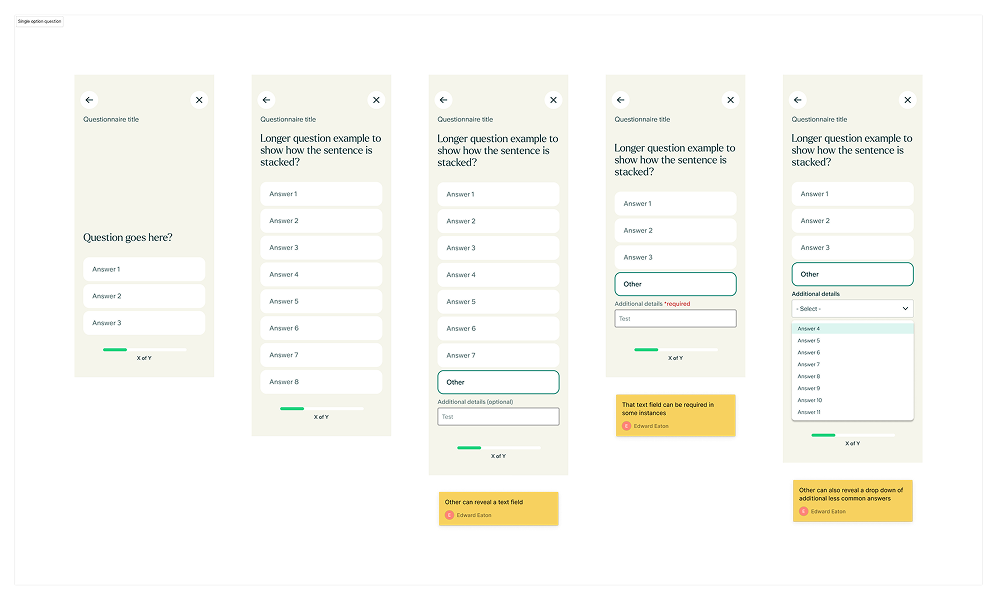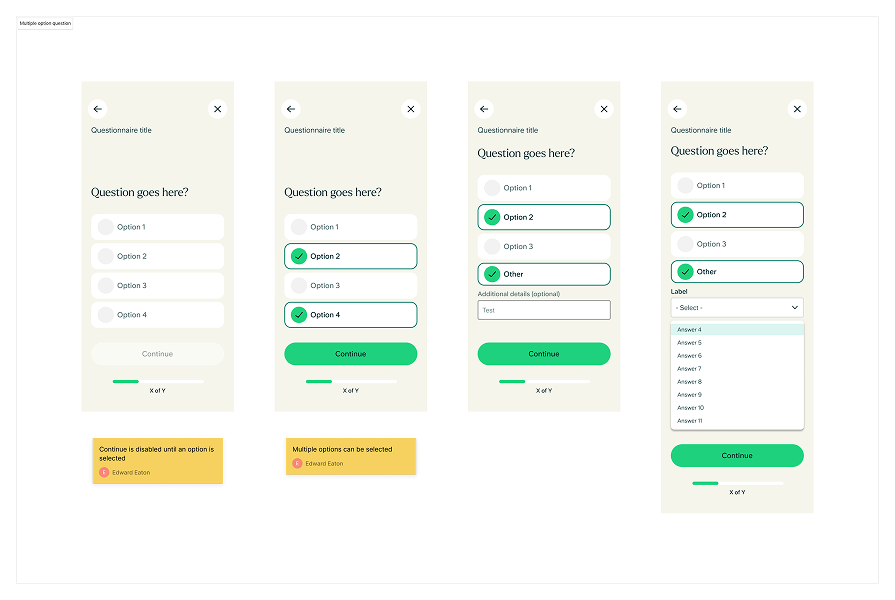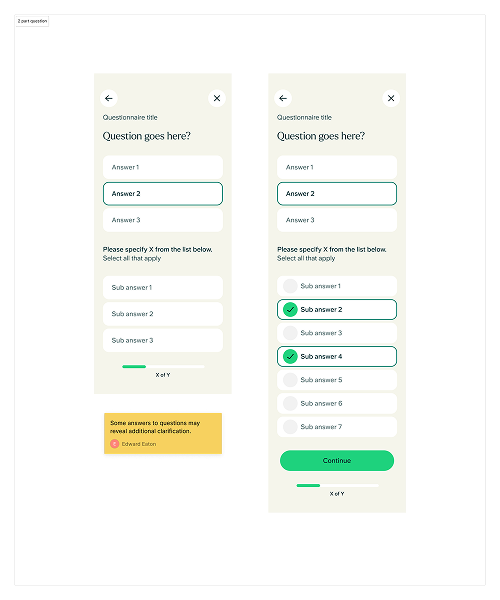
Generative AI Therapy Chat Bot
Velora is ieso’s generative AI-powered software that supports people experiencing symptoms of anxiety and depression.
My role: Senior designer
Team: 2 Product managers, 3 designers, 5 AI engineers, 2 front end and 4 backend engineers.
Year: 2024

Reduced onboarding time by
50%
Implemented notifications, schedules, and reminders
Increased re-engagement
up 15%
What is Velora
Velora is an AI led CBT therapy app. Using the conversational data from Ieso’s UK typed and video therapy web app (see the project) to train an AI in guiding a user through 6-9 weeks of guided CTB therapy.
The app wasn’t publicly available, but in beta in the US. Though testing it was found that after session 3 people really started to see a benefit in using the app. However the drop off rate for users getting to that point was huge.
The goal
Increase the “ah ha” moments in the app. Increasing perceived benefit of using Velora.
Assumption - This will drive users to go further into the sessions where the benefit of the app starts to be felt by usersIncrease the number of users getting through the onboarding
Assumption - On boarding has a huge drop off rate, it takes too long to get into your first sessionDecrease the time it takes to get to session 3
Assumption - Session 3 was identified in testing as a point of high benefit for users. The more users that get to this point, the stickier the app will be.Decrease the reliance of chat bot for all experiences
Assumption - Different types of experience will increase the premium feel of the app making it more stickyIncrease the data gathered on users
Assumption - With better data collection we can publish more research increasing brand awareness and trust
Account creation
Initial account creation had some friction that could easily be address with existing funtionality in the app.
Account details
Name, email address, phone number, age, location, identity, etc. Account details over time had become bloated with research questions in addition to the questions required for account creation. By pulling out all of the nice to have questions from account creation and building them into an account profile, I reduced the number of questions by 70%.
The research questions were still super important to ieso. I designed a flow were questions were asked after sessions that were rated in testing as enjoyable. These questions were skippable as they’re not required, but by putting them after positive with the addition that these questions help improve the experience. In addition research could change the questions being asked, add or remove questions & change the priority.
Registration
Account creation
Account details
Personal details
Account details step removed and incorporated into chat bot and additional detail requests.
Complete account
Account password and email verification
Declarations
Legal and safeguarding requirement
Declarations streamlined & changed to Opt-out from opt-in
App and program intro
Details about the program and what to expect
Removed & incorporated into the app’s interface
Account details
For research purposes a users account details could be many in number and decrease or increase depending on the answers they gave.
For all of the questions not necessary for deciding wether they’re applicable and safe for AI therapy I designed a system that would periodically ask users for additional personal details throughout their journey through the program.
Baseline assessment
A key part to measuring the effectiveness of CBT is to get a baseline of the users current level of anxiety, and depression and how that changes as the use the app. These measurements are done using the GAD 7 and PHQ 9. 16 questions that need to be asked before we can start your treatment.
These wrap wrapped into the onboarding with a lot of expectation setting. In testing users were already familiar with these questions or expected to have to answer similar questions. Using this data as the basis for streamlining to wrapper around the questions and using motion and better UX patterns, we made these questions feel fast and as non intrusive as possible.
Meet the team
Introduction to the team behind the program
Gad 7
Self-reported questionnaire for screening anxiety
Streamlined questionnaire interaction
PHQ 8/9
Self-reported questionnaire for screening depression
Program tour
How to use the program journey map
Tool tips tested and removed. Instructions incorporated into UI.
Removed and improved the chat bot’s introduction




Question types
Question templates were designed and built to cover all GAD, PHQ, and research questions.
Getting through the session
Clinicians at ieso built periods to reflect on what you’d learnt in the app into the product. These periods were called practice tasks. For example, after a session. You would be given something to think about for the next week before you’re next session. The app would then lock you out of the next session until a week had passed. In testing this was frustrating to users and it was believed internally that this was contributing to the drop off in return users after session one.
Product wanted to remove the blocks completely while clinical was concerned about the efficacy of the treatment if there was no time to reflect.
How can we remove the hard stops in a way that tries to encourage the user to take some time away from the app, but still come back. Some concepts were wire framed with product and clinical which we took to testing while running some unmoderated questionnaires to users about how they would like to experience the session.
Using the data from the testing I built some prototypes that used the chat bot the schedule a next session and set a reminder in how ever long the user entered. This gave the user flexibility to work around their schedule and primed them to accept notifications from ieso. Giving us more opportunity to send reminders to users.

Flexible appointments & reminders
Guide them to the next session. We recommend X days for this practice. Recommended time and date already input.
Additional priming for people who haven’t given us notification access yet.
Recommendation based on app use and clinical guidance
Notification for appointment


